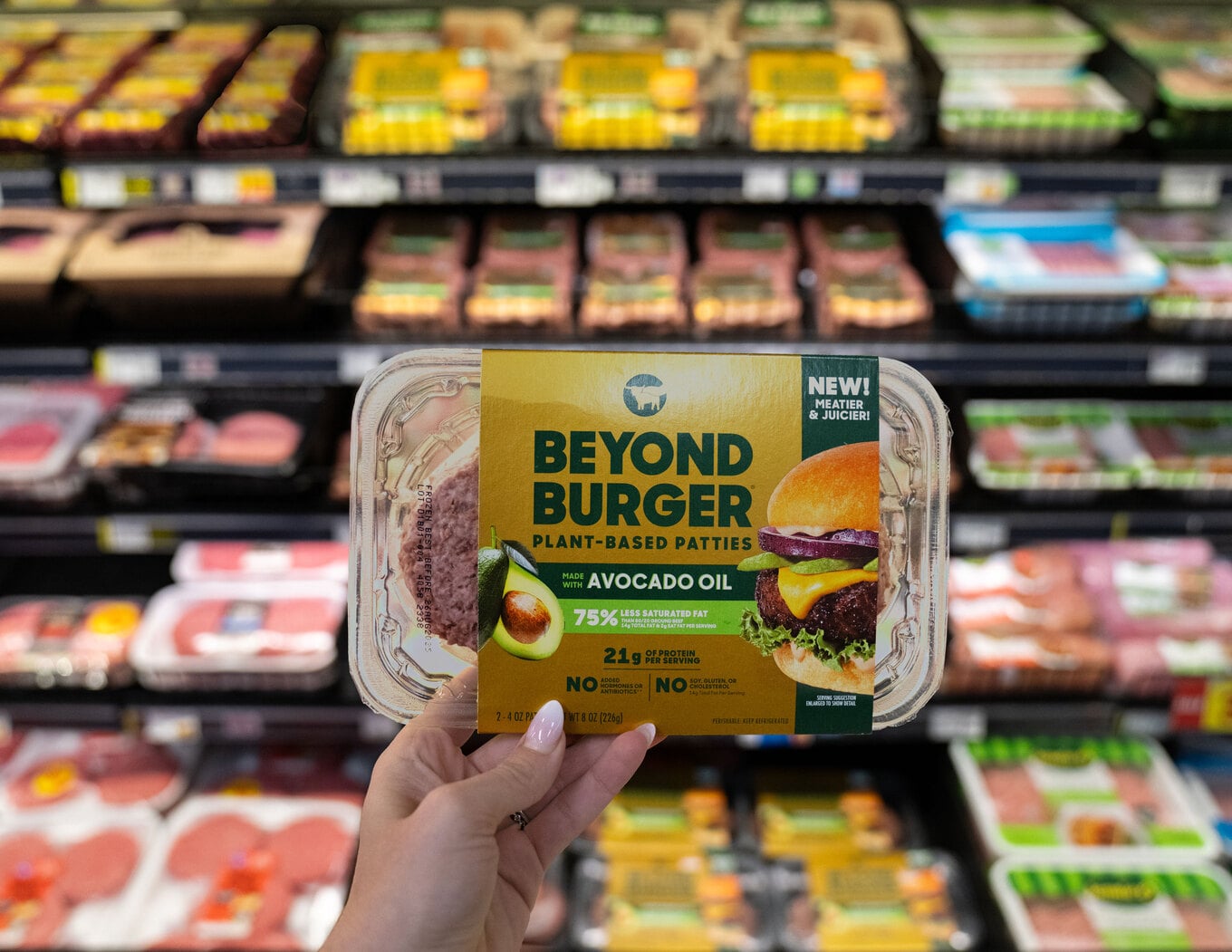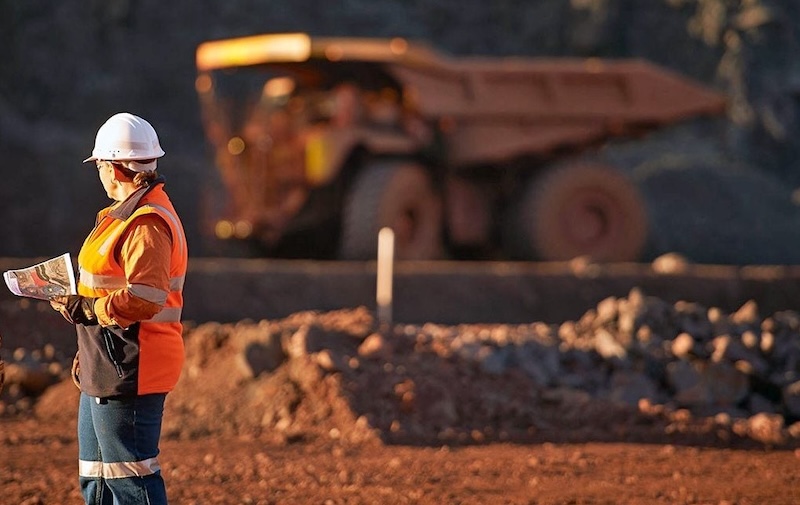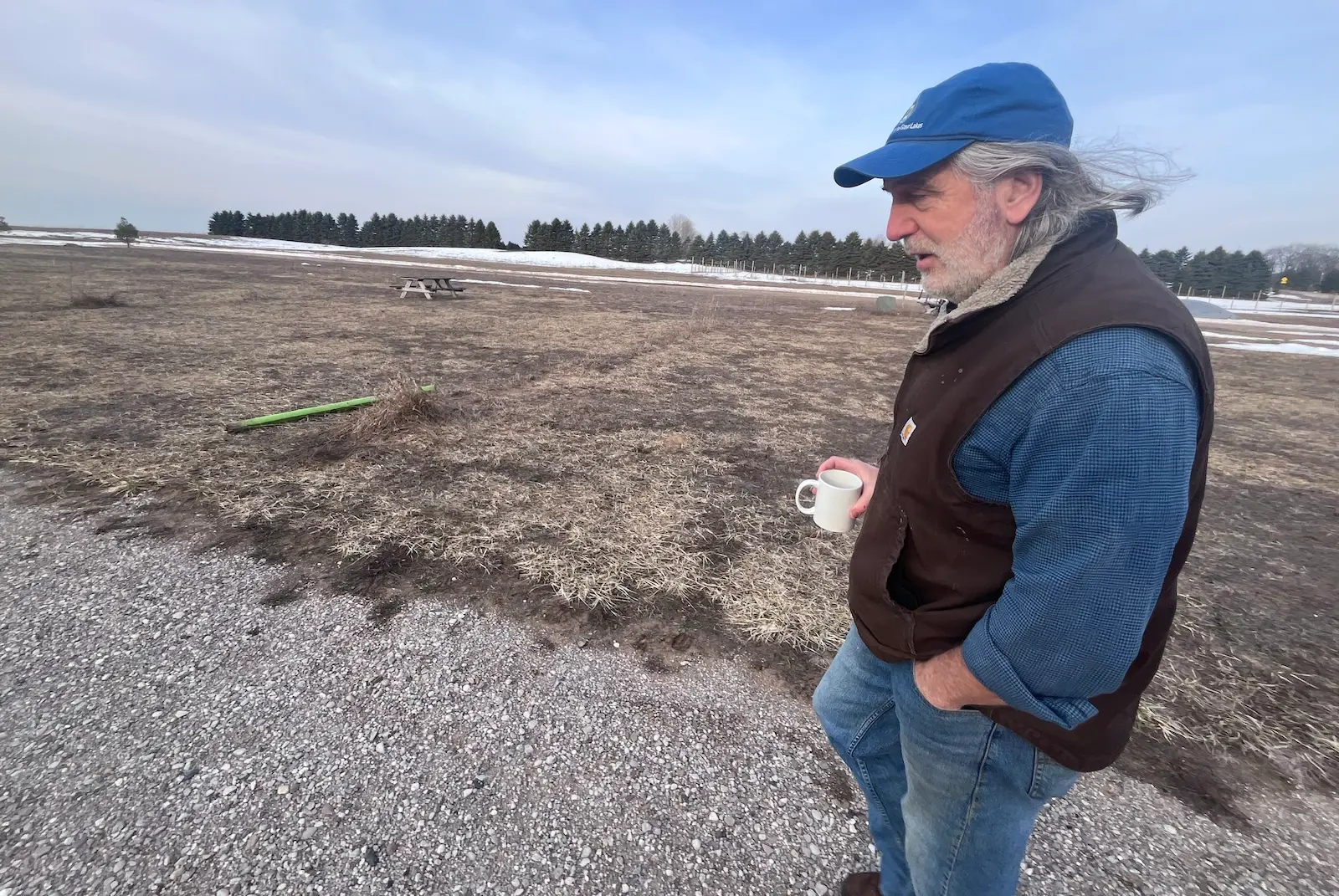It is virtually impossible for the world to achieve the Paris Agreement’s climate targets without producing and consuming dramatically less meat. But demand for plant-based alternatives, like the imitation burgers sold by Impossible Foods and Beyond Meat, has steadily declined in recent years — all while global meat consumption continues to grow.
The problem with plant-based alternatives, for the moment, is that most consumers just don’t seem interested in buying them instead of conventional meat. This year alone, U.S. retail sales for refrigerated plant-based burgers fell by more than a quarter.
But there are signs that consumers might be perfectly happy to reduce their meat consumption in other ways. New research shows that meat eaters already prefer the taste of some “balanced proteins” — items like hamburgers and sausages that replace at least 30 percent of their meat content with vegetables — over conventional meat. While that may sound like a small change, the climate impact could be surprisingly large at scale: Initial research suggests that, if Americans replaced 30 percent of the meat in every burger they consume in a year, the carbon emission reductions would be equivalent to taking every car off the road in San Diego County.
Taste and price are often listed as reasons for sluggish consumer interest in plant-based proteins. That’s where Nectar, the group that conducted the new research, comes in: Part of the philanthropic organization Food System Innovations, Nectar conducts large-scale blind taste tests with omnivores to determine exactly how much consumers prefer meat over veggie options, or vice versa.
To be clear, balanced proteins — sometimes called “blended meats” — are a far cry from the vegetarian or vegan options that are most climate-friendly. Balanced proteins are still meat products, just with less meat. These novel foods incorporate plant-based protein or whole-cut vegetables into the mix. Companies experimenting with balanced proteins — which include boutique brands as well as meat titans like Purdue — frame these additions not as filler, but as a way to boost flavor and sneak more nutrients into one’s diet. It may not be a hard sell; after all, Americans are among the most ravenous meat consumers in the world, and they are estimated to eat 1.5 times more meat than dietary guidelines recommend.
What Nectar found in its latest research is that the balanced protein category is already relatively popular with meat eaters: Participants reported they were more likely to buy balanced protein product than a vegan one. That means that balanced proteins could serve as one way to get consumers to eat less meat overall, lowering the carbon footprints of omnivores reluctant to give up burgers entirely.
In other words, while profit-minded companies like Purdue might sell blended meats as a win-win for consumers looking for better taste and higher nutritional content, the fact that substituting these products for conventional meat could cut down on greenhouse gas emissions is an unspoken perk for the planet.
“Taste has to be at the forefront” if animal protein substitution is going to take off, said Tim Dale, the Category Innovation Director at Food System Innovations.
Mixing vegetables and whole grains directly into meat products is nothing new. Onion, garlic, and parsley often appear in lamb kofta; breadcrumbs help give meatballs their shape and improve their texture. Dale noted that chefs sometimes mix mushrooms into burgers to keep their patties from drying out. Replacing one third of a sausage with, say, potatoes and bell peppers, is “just doubling down on that logic and doing so because of this new motivation of sustainability,” he added.

To gauge how consumers perceive balanced proteins, Dale and his team designed a series of blind taste tests in which participants sampled both traditional meat products — burgers, meatballs, chicken nuggets, and a half-dozen other popular meats — as well as balanced protein options of the same type. The consumers then responded to survey questions asking them to evaluate flavor, texture, and appearance. (Like previous studies done by Nectar, the taste tests were done in a restaurant setting, rather than a laboratory.)
Nearly 1,200 people — all of whom reported eating their product category (say, meatballs) at least once every month or two — participated in these taste tests. The results revealed that participants preferred the taste of three balanced protein brands — the Shiitake Infusion Burgers from Fable Food Co., the Purdue PLUS Chicken Nuggets from Purdue, and the Duo burger from Fusion Food Co. — over that of the “normal” all-meat alternatives. A fourth item, the BOTH Burger from 50/50 Foods, was ranked evenly with an all-meat burger, reaching what Nectar calls “taste parity”.
Dale called balanced proteins “a re-emerging category,” one that has been around but might be well-positioned to pick up steam in a climate-changing world as both consumers and producers of meat struggle to make more sustainable choices. Nectar likens balanced proteins to hybrid cars, because they represent a midpoint on the path to going meatless. Cara Nicoletta, a fourth-generation butcher who founded Seemore Meat & Veggies, experimented with sneaking vegetables like bell peppers, mushrooms, and carrots into her sausages for a decade before launching her business around 2020. She has said that, while working as a butcher, the amount of meat she saw her customers purchase day in and day out did not “seem like a sustainable way to eat.”
While brands may not spell it out in their marketing, the reason why cutting the amount of beef or pork or chicken in your sausage is better for the environment is because raising meat for human consumption is a massive source of greenhouse gas emissions. In 2024, the United Nations found that the agrifood system is responsible for one third of global greenhouse gas emissions; in that same report, the U.N. stated that livestock was the single largest source of these emissions within the food system, followed by the deforestation required for the farmland and pasture that support omnivorous diets. This is difficult to talk about, and brands rarely do. (Purdue’s line of blended chicken nuggets instead highlights its hidden cauliflower and chickpea content as a nutritious plus for kids.)
For the climate-minded, of course, there’s no better way to reduce meat consumption than by cutting it out entirely. “Ideally, I’d love to see a future where we moved away from animals in the food system completely,” said Brittany Sartor, who co-founded Plant Futures, a curriculum at the University of California, Berkeley, geared towards preparing students for careers in the plant-based alternatives industry. (Sartor was not involved in the Nectar study.)
But she added that Nectar’s findings on balanced proteins are promising, and she believes these items “have potential to reduce animal consumption and its related health and environmental impacts — especially among certain consumer demographics.”
Dale put it this way: Whether people give up meat entirely or not, framing the veggie-forward option as superior can start with centering taste: “We are trying to promote and say that the sustainable choice is the more delicious way to cook.”
So far, meat eaters agree.
This story was originally published by Grist with the headline The sneaky way even meat lovers can lessen their climate impact on Jun 4, 2025.
This post was originally published on Grist.


 Trader Joe’s
Trader Joe’s Trader Joe’s
Trader Joe’s Trader Joe’s
Trader Joe’s












 Beyond Meat
Beyond Meat Carl’s Jr.
Carl’s Jr. Beyond Meat
Beyond Meat




























